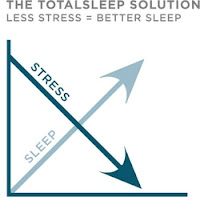WHAT IS THE PROSTATE?
The prostate is a walnut-sized organ that is part of the male reproductive system. It is located in front of the rectum, below the bladder, and wraps around the urethra. The prostate makes some of the semen that carries sperm.
WHAT IS PROSTATE CANCER?
Prostate cancer usually starts in the gland cells. This type of cancer is called adenocarcinoma. It usually grows slowly and can spread to other parts of the body if untreated. September is prostate cancer awareness month.
WHAT PUTS ME AT RISK FOR PROSTATE CANCER?
- African American race
- Age over 50 (and risk increases with age)
- Habitual alcohol use
- A diet high in animal fat
- Family history of prostate cancer
PREVENTION
The best prevention is to minimize any modifiable risk factors. Obviously, you can’t change your age, race, or family history. However, reducing the consumption of alcohol and animal fat (red meat, dairy, poultry skin, eggs) can help reduce the risk of prostate cancer. Those consuming a low-fat vegetarian diet or a traditional Japanese diet (high in omega-3 fatty acids) are at lowest risk.
EARLY DETECTION
The key to minimizing severity and improving outcomes for prostate cancer treatment is to catch it early. A simple blood test can measure prostate specific antigen (PSA), which is an indicator of cancer risk. Annual PSA testing should begin at age 50 for most men, or perhaps slightly younger when there is a family history of prostate cancer. If you have a family history of prostate cancer, ask your family physician about when to begin PSA testing. A rectal exam will reveal any prostate enlargement or irregularities. An enlarged prostate does not necessarily indicate cancer, but it might suggest further testing. See your family physician annually to discuss prostate health as part of your general well visit and determine the screening approach that is right for you. If you don’t have a family physician, talk with your plant nurse about finding someone.
If you have an abnormal PSA or rectal exam, a biopsy is necessary to diagnose prostate cancer. If you have a positive biopsy, a CT scan or bone scan may be done to determine if the cancer has spread.
SYMPTOMS
Regular PSA testing will allow for detection prior to the onset of any symptoms. By the time symptoms are evident, the cancer may have already progressed. These symptoms may also be a sign of prostate problems that are non-cancerous. Such symptoms may include: difficult urination (slow start, slow stream, leaking or strained urination), blood in urine or semen, bone pain or tenderness in pelvis or low back (once cancer has spread).
STAGES
Prostate cancer is graded by these categories of severity:
2-4: Low grade
5-7: Intermediate (most cancers are caught in this stage)
8-10: High grade
TREATMENTS
Depending on your overall health and the progression of the cancer, your doctor may recommend one specific treatment, several options, or a combination of approaches. These may include surgery, radiation, hormone therapy, or a period of close monitoring.
OUTCOMES
If prostate cancer is detected early (before spreading), it can often be cured. It may also be cured if it hasn’t spread very much. Even for prostate cancer that has spread, some treatments can be effective in delaying progression for many years. The key is early detection, so visit your family doctor to discuss prostate health right away!














